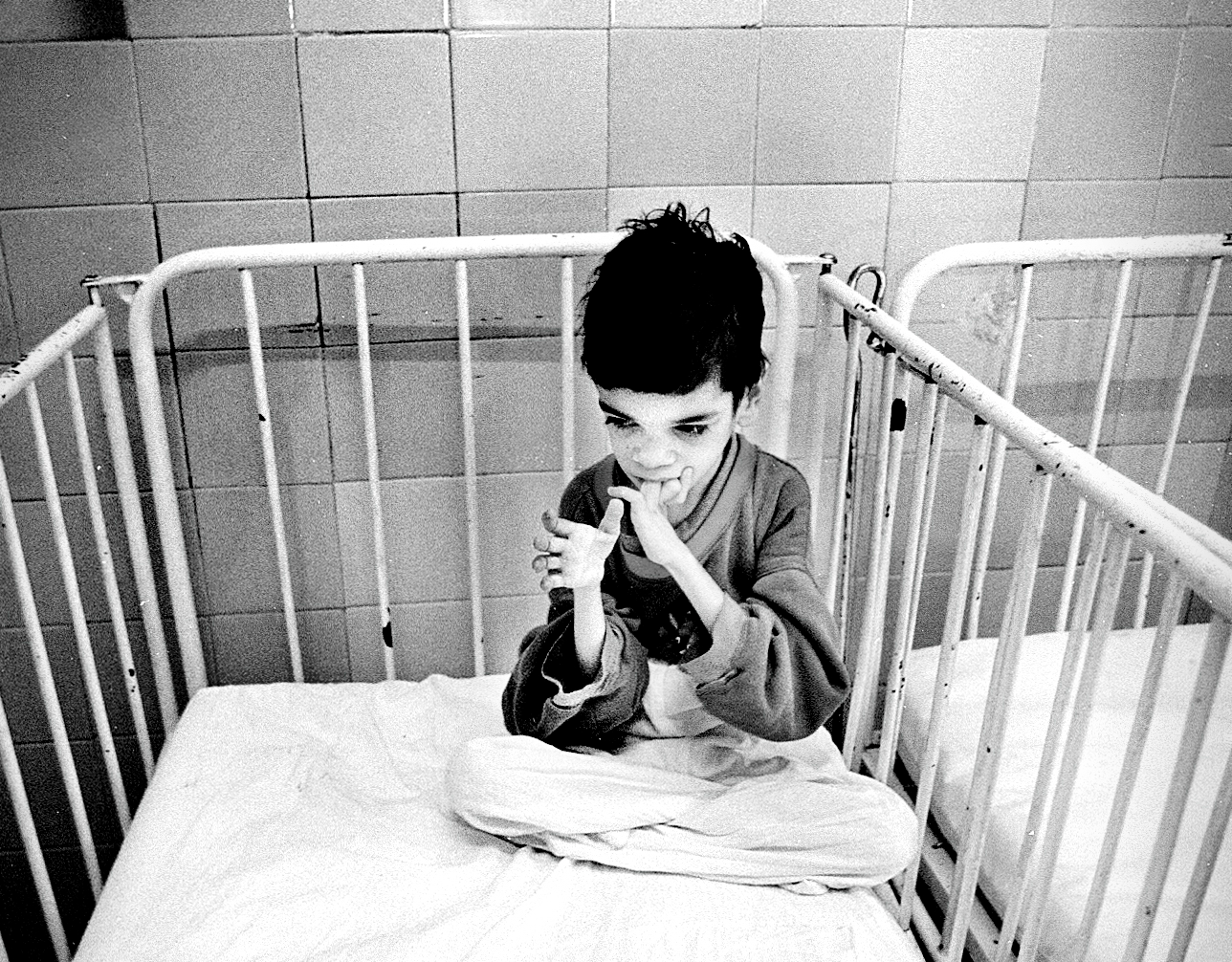In the Chichester Crime Mysteries, DCI Beniamin Dinescu, the main protagonist, was one of the children rescued from an orphanage in Bacău, Romania, in 1990. At nine years old, he was taken in by foster parents and moved to London. They insisted that young Beniamin maintain his connection with his Romanian heritage and culture by introducing him to a Romanian community in London. Dinescu’s story is purely fictional, but quite deliberately, I didn’t want to create a fictional detective trope. I wanted to create a believable background for him that mirrors the real-life stories of many Romanian orphans, who faced years of psychological and physical hardship before finding safety and family support within Romania and abroad.
History of Ceaușescu’s Orphanages
Romanian orphanages became notorious after the fall of communism in 1989. Many of us remember the shocking images of malnourished, neglected children being reported on the news all over the world. These orphanages were a grim legacy of Romania’s last communist leader, Nicolae Ceaușescu, and his pro-natalist policies. In 1966, Ceaușescu prohibited abortion and contraception for most women, believing that creating a larger population would bring about economic growth. Tragically, as a result, many thousands of children were born to families too poor to care for them and were abandoned to state institutions. By 1990, over 100,000 children were living in these Dickensian-style orphanages, often in appalling conditions. He had either failed to foresee the consequences of his decree, or he had failed to respond to the crisis that ensued.
As was clear from the news reports, children in these institutions had faced severe neglect. Many were malnourished and lacked adequate medical care or close human contact. The lack of nurturing, including the basic need for human love, had caused severe developmental delays. As they grew older, many were misdiagnosed with mental or physical disabilities and were confined or sedated. Ceaușescu’s regime chose to prioritise cutting costs, treating these children as a burden on society, which led to further abuse and deprivation.
Following Ceaușescu’s downfall and execution on 25th December 1989, several international organisations responded to the crisis, working to rescue children from these institutions. Groups like Human Rights Watch, Hope and Homes for Children, and various charities played key roles in raising awareness, providing aid, and promoting adoption. Their efforts helped many children find homes, particularly in Western Europe and North America.
Damaged Children
Children who left Romanian orphanages often faced long-term psychological challenges, particularly attachment disorders and emotional dysregulation, as a result of their early neglect. Research shows that the lack of consistent caregiving, social interaction, and stimulation during critical developmental periods led to issues such as reactive attachment disorder (RAD) and post-traumatic stress disorder (PTSD). Many children struggled to form secure relationships, exhibited anxiety, and had difficulty regulating their emotions. Studies like the Bucharest Early Intervention Project revealed that early trauma and neglect could lead to impaired brain development, further compounding cognitive and emotional difficulties. While adoption into nurturing environments helped some children recover, many continued to face mental health challenges well into adulthood, requiring ongoing support and therapy to mitigate the impact of their institutional upbringing.
Romania’s Orphanages Today
While progress has been made in Romania’s child welfare system since then, the country’s past continues to influence its approach to care. The government has closed many orphanages, and most children are now placed in foster care or smaller, family-type homes. Yet, even today, the memory of these dark times lingers, serving as a reminder of the dangers of institutional neglect.
Organisations such as Hope and Homes for Children are working to see the closure of all orphanages by 2026.
References
For further reading, you can check sources such as Human Rights Watch and the Borgen Project, which provide detailed accounts of this history and the long-term impact on Romania’s children.
American Psychological Association: https://www.apa.org/monitor/2014/06/neglect
The Lessons Learned from Romanian Orphans 30 Years Later
Cropped image by Thomas Black57, Public domain, via Wikimedia Commons
